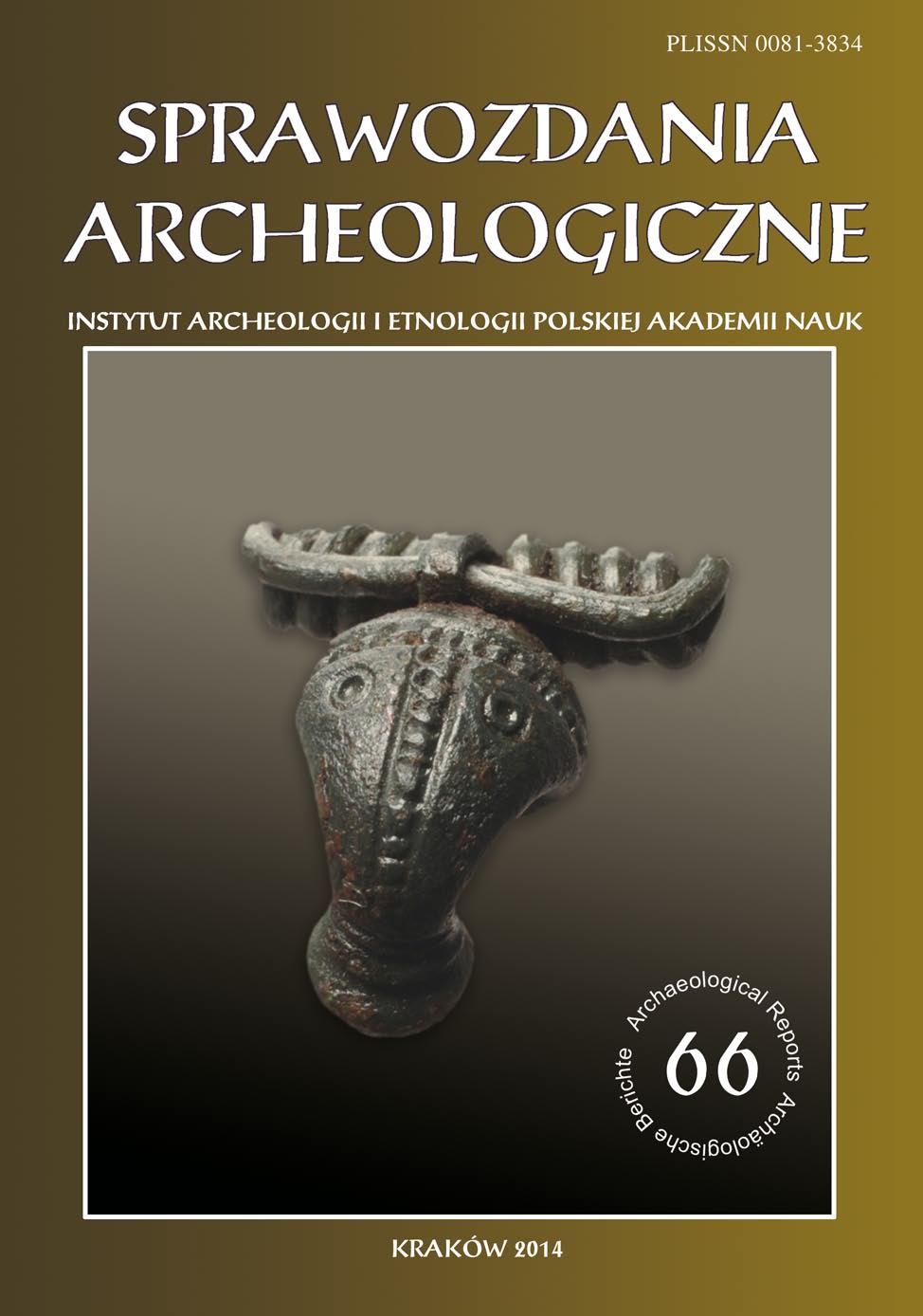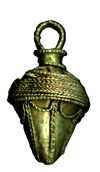Journey to murder: Atypical graves of the immigrants in the Early Bronze Age Europe
Słowa kluczowe:
stable isotopes, forensic archaeology, carbon reservoir effect, Early Bronze Age, Únětice culture, SilesiaAbstrakt
Migrations had important effects on Bronze Age economy, adaptation of new inventions and technological cohesion, however their impact upon society remains under-studied. The knowledge of how individual longdistance journeys affected forms of societal interaction is limited and fragmented, especially when it comes to murder. In archaeology the analyses of criminality encounter massive obstacles due to unknowable character of crimes, victims and social contexts of these. In this paper we present new data and results of isotopic analyses (14C, 87Sr/86Sr, 15N and 13C) of the four individuals discovered in the mass grave in Milejowice, SW Poland, and associated with the Únětice Culture (2200–1700 B.C).Our data indicate the presence of immigrants from other parts of Europe in prehistoric Silesia and sheds a new light upon likely nature of crimes in the Early Bronze Age Úněticean society. The availability of high-resolution data on various levels, from intra-individual to interpopulation, makes stable isotope analysis a powerful tool for studying mobility and food practices
Pobrania
Bibliografia
-
Ascough P., Church M. J, Cook G., Dunbar E., Gestsdóttir H., McGovern T. H, Dugmore A. J, Friđriksson A. and Edwards K. J. 2012. Radiocarbon reservoir effects in human bone collagen from northern Iceland. Journal of Archaeological Science 39(7), 2261–2271
-
Brookman F. 2005. Understanding Homicide. London: Sage
Butent-Stefaniak B. 1997. Z badań nad stosunkami kulturowymi w dorzeczu górnej i środkowej Odry we wczesnym okresie epoki brązu (= PAN Oddział we Wrocławiu. Prace Komisji Archeologicznej 12). Wrocław: Ossolineum
Emberling G. 1997. Ethnicity in Complex Societies: Archaeological Perspectives. Journal of Archaeological Research 5, 295–344
-
Evans J. A., Chenery C. A. and Fitzpatrick A. P. 2006. Bronze Age childhood migration of individuals near Stonehenge, revealed by strontium and oxygen tooth enamel analysis. Archaeometry 48, 309–321
-
Evans J. A., Montgomery J. and Wildman G. 2009. Isotope domain mapping of 87Sr/86Sr biosphere variation on the Isle of Skye, Scotland. Journal of the Geological Society 166, 617–631
-
Evans J. A., Montgomery J., Wildman G. and Boulton N. 2010. Spatial variations in biosphere 87Sr/ 86Sr in Britain. Journal of the Geological Society 167, 1–4
-
Fitzpatrick A. P. 2002. The Amesbury Archer: a well-furnished Early Bronze Age burial in southern England. Antiquity 76(293), 629–630
-
Goethals G. W. 1978. Factors Affecting Permissive and Nonpermissive Rules Regarding Premarital Sex. In J. M. Henslin and E. Sagarin (eds.), The Sociology of Sex. New York: Schocken Books, 41–58
Haglund W. D., Connor M. A. and Scott D. D. 2001. The Archaeology of Contemporary Mass Graves. Historical Archaeology (= M. A. Connor and D. D. Scott (eds.), Archaeologists as Forensic Investigators: Defining the Role), 35, 57–69
-
Haak W., Brandt G., de Jong H., Meyer C., Ganslmeier R., Heyd V., Hawkesworth C., Pike W. A. G., Meller H. and Alt K. W. 2008. Ancient DNA, Strontium isotopes, and osteological analyses shed light on social and kinship organization of the Later Stone Age. Proceedings of the National Academy of Sciences of the United States of America 105, 18226–18231
-
Jessee E. 2003. Exhuming Conflict: Some Recommendations for the Creation of a Series of Experimental Mass Grave and Mass Grave-Related Test Sites. Department of Archaeology, Simon Fraser University, Burnaby BC (Unpublished MA Thesis)
Keppel R. D. 2005. The Jack the Ripper Murders: A Modus Operandi and Signature Analysis of the 1888–91 Whitechapel Murders. Journal of Investigative Psychology and Offender Profiling 2(1), 1–21
-
Kopiasz J. 2004. Cmentarzysko kultury unietyckiej na stanowisku Milejowice 19, pow. Wrocław, woj. Dolnośląskie. In Gediga B. (ed.), Archeologiczne Zeszyty Autostradowe IAiE PAN 3. Badania na autostradzie A–4, część 2. Wrocław: Instytut Archeologii i Etnologii Polskiej Akademii Nauk, 31–60
Mant A. K. 1987. Knowledge acquired from post-war exhumations. In A. Boddington, A. N. Garland and R. C. Janaway (eds.), Death, Decay and Reconstruction: Approaches to Archaeology and Forensic Science. Manchester: Manchester University Press, 65–78
Meier-Augenstein W. and Fraser I. 2008. Forensic isotope analysis leads to identification of a mutilated murder victim. Science and Justice 48, 153–159
-
Meier-Augenstein W. 2010. Stable Isotope Forensics: An Introduction to the Forensic Application of Stable Isotope Analysis. Chichester: John Wiley & Sons
Pokutta D. A. and Frei K. M. 2011. Isotopic study of Szczepankowice Early Bronze Age barrow burial ground (southwestern Poland). Silesia Antiqua 47, 70–91
Pokutta D. 2013. Population Dynamics, Diet and Migrations of the Únětice Culture in Poland. Gothenburg: Gothenburg University
Price T. D., Frei K. M., Dobat A. S., Lynnerup N. and Bennike P. 2011. Who was in Harold Bluetooth’s army? Strontium isotope investigation of the cemetery at the Viking Age fortress at Trelleborg, Denmark. Antiquity 85, 476–489
-
Sanders T. 2003. Imagining the Dark Continent: the Met, the media and the Thames Torso. Cambridge Anthropology 23(3), 53–66
Skinner M. F. 1987. Planning the archaeological recovery of evidence from recent mass Graves. Forensic Science International 34, 267–287
Pobrania
Opublikowane
Jak cytować
Numer
Dział
Licencja

Utwór dostępny jest na licencji Creative Commons Uznanie autorstwa – Użycie niekomercyjne – Bez utworów zależnych 4.0 Międzynarodowe.














